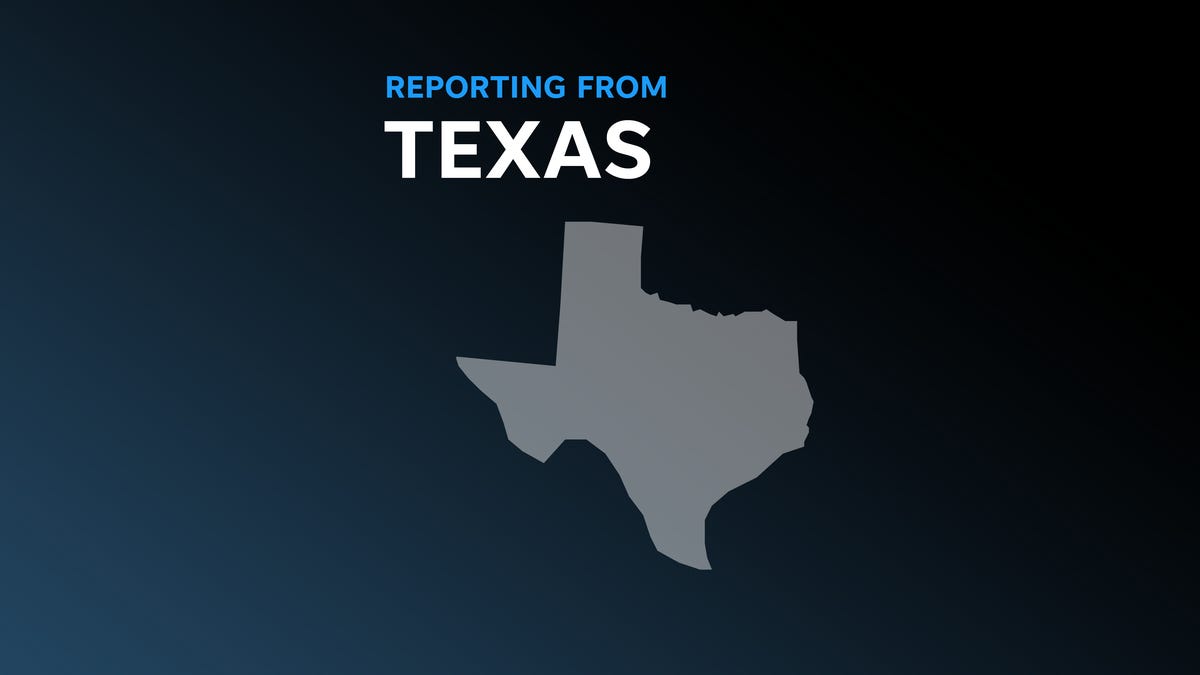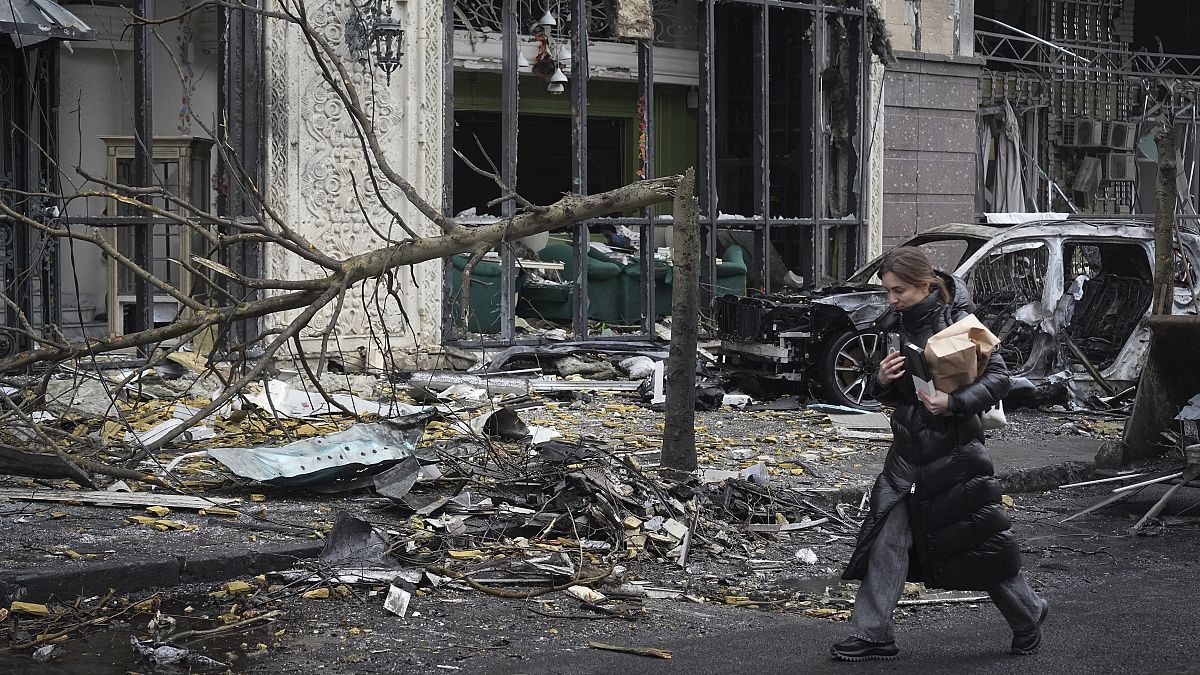North Carolina
‘Lack of resources’: Increasingly, NC foster children are having to sleep in county offices

RALEIGH, N.C. (WTVD) — The increasing strain on North Carolina’s foster care system is leading counties to scramble to find places for children to stay. On many occasions, this has led to children sleeping in county offices.
“This is not an issue that counties have been prepared to have to deal with. And so we’re making the best of an unfortunate situation,” said Diamond Wimbish, Wake County’s child welfare assistant division director.
Wimbish said Wake County has converted visitation areas within the DSS office into bedrooms; equipped with beds and dressers. County social workers serve as caregivers in these settings in addition to their regular roles.
Last year 78 children slept in the office; a majority stayed for longer than a week.
This number has tripled since 2020 when the county reported just 23 children utilizing the makeshift housing.
As this sleeping arrangement becomes more common, state officials started tracking data earlier this year.
The data obtained by the I-Team reveal dozens of foster children each week are sleeping in DSS offices, DSS housing, or hotels. In early June, 56 children statewide had no homes to go to. Counties are not required to report and dozens of counties don’t; so the true extent of the problem could be much more significant.
Michelle Shaw has fostered an estimated 30 children in Wake County for nearly two decades.
“It’s been one of the most rewarding experiences ever to see kids get adopted or to see them graduate high school, graduate college. It has been absolutely amazing,” Shaw said. “I have seen kids experience the beach for the first time or a traditional Christmas for the first time. So it has been really amazing. It’s been a fulfilled 18 years.”
She said she believes short-term stays in offices and other temporary homes will have a negative effect on children.
“The current shortages in foster parents impacts the kids the most. Children are having multiple temporary placements and it increases the issues of instability,” Shaw said.
While she still finds fulfillment in fostering, many others have stopped accepting children into their homes.
ALSO SEE: Growing need for foster care families in North Carolina during summer months
Wake County lost 157 licensed foster homes since 2019, according to data from the NC Department of Health and Human Services (NCDHHS). Other counties, such as Orange and Vance, lost half of their foster homes.
The state has about 5,800 homes — 18% fewer than before the pandemic.
And with nearly 11,000 foster children, it’s not hard to see why some kids are ending up sleeping in county offices.
This reduction has led to children sleeping in offices, but at other times it’s meant sending them outside of North Carolina.
“More and more we’re having to place children outside of the county, outside of the state, which definitely impacts their ability to reunify with their families,” Wimbish said.
The shortage of homes also puts a strain on existing families like Shaw’s.
“I currently only have one foster child, and when I need a recharge or a reset, it’s often difficult to find respite or a support home, especially in the local area,” Shaw said.
Another part of the problem, Wimbish said, is that children have an increasing number of complex behavioral health problems. It’s a difference that Shaw has seen firsthand.
“The children are having more crisis-management issues, some kids are more aggressive now. And whether that be physical or verbal, you know, that is very challenging when you’re dealing with it,” she said.
Many foster families and DSS workers are not trained or licensed to care for children who have more complex behavioral and mental health needs, which leads to even fewer placement options.
“As resource-rich as Wake County is, there’s a lack of resources to meet the needs in the community,” Wimbish said.
Wimbish does not foresee the need for these spaces to go away in the near future so leaders are continuing to explore every option.
One of those potential solutions could be found in Cumberland County, which operates a DSS group home that serves as an emergency facility so children do not have to stay in offices when they don’t have a placement.
As Wake County officials explore more long-term solutions, they have hired more staff to specifically oversee the children who stay in the county building.
“I think initially their response was is this a temporary solution that’s needed because it’s a result of fallout from COVID? But we are now, you know, two years later and still seeing this problem and actually seeing an increase in, not decrease. And so we’re realizing that there are permanent,” Wimbish said.

North Carolina
North Carolina federal prison supervisor convicted after instructing physical punishment

BUTNER, N.C. — A North Carolina federal prison supervisor has been convicted after investigators say he instructed a correctional officer to physically punish a man incarcerated at the institution by beating him.
Daniel Mitchell, a former Federal Bureau of Prisons lieutenant, pleaded guilty earlier this week to a felony charge of conspiring to violate civil rights, according to a U.S. Department of Justice statement.
“Corrections officers work in dangerous environments with limited resources and deserve our respect and gratitude,” U.S. Attorney Michael F. Easley Jr. said in a statement. “But officers acting outside the law to injure an inmate erodes the rule of law, violates civil rights and puts other officers’ lives in jeopardy.”
An attorney who represented Mitchell declined to comment Saturday.
The beating happened at the Federal Correctional Institute Butner Medium II in the special housing unit in Granville County, which Mitchell supervised, authorities said. The prison houses more than 1,600 people, according to its website.
A correctional officer reported to Mitchell on Dec. 8, 2021, that the incarcerated man had exposed himself and “engaged in a sexual act” in front of her while she was doing rounds in the unit, investigators said. Mitchell then began discussing with another correctional officer about how to punish the man.
Neither the man nor the two correctional officers were named by the U.S. Department of Justice or court documents from the case. The department did not indicate whether the conspiring officer also faced charges.
Normally, the prison’s misconduct discipline process involves a writeup for violations. The writeup is then delivered to the person, which is referred to as “counseling,” according to court records.
Mitchell and the conspiring officer agreed traditional punishment methods wouldn’t work for the man, investigators said. While giving instructions, Mitchell allegedly told the officer to “teach a lesson” and “tune” him up — phrasing they both understood as physical punishment, according to court documents. He also ordered the officer to “stay away from face” while punishing him, authorities said.
The man was taken to another cell where the officer hit and kicked him until other correctional officers intervened, the department said. The man later had a medical emergency involving spasms after the beating aggravated his preexisting back condition, investigators said.
An eyewitness officer reported the beating, which prompted an investigation from the U.S. Justice Department’s Officer of Inspector General. Mitchell and the conspiring officer both admitted to investigators that they planned to physically punish the inmate as disciplinary action, authorities said.
Mitchell’s sentencing hearing is scheduled for late March, where he faces up to 10 years in prison.
This article was generated from an automated news agency feed without modifications to text.
North Carolina
Top UConn and North Carolina Players Not Playing in the Fenway Bowl

The UConn Huskies had their best season since 2010, and their reward is a Fenway Bowl clash with a North Carolina Tar Heels side transitioning to an exciting new coaching staff in 2025, led by legendary NFL head coach Bill Belichick.
Between injuries, transfer portal entrants, and NFL Draft declarations, there will be several UConn and North Carolina players not playing in the Fenway Bowl.
Top UConn Players Not Playing in Fenway Bowl
Thanks to the CFN Bowl Game Opt-Out Tracker, we know which players from the Huskies won’t be in action in the Fenway Bowl.
- Nathaniel Wallace-Dilling, P, UConn (transfer portal)
- Reggie Akles, CB, UConn (transfer portal)
- Durrell Robinson, RB, UConn (transfer portal)
- Jarvarius Sims, CB, UConn (transfer portal)
- Brock Montgomery, WR, UConn (transfer portal)
- Lee Molette III, DB, UConn (transfer portal)
- Julien Simon, LB, UConn (transfer portal)
- Skyler Bell, WR, UConn (transfer portal)
- Pryce Yates, DL, UConn (transfer portal)
- Malcolm Bell, CB, UConn (transfer portal)
10 UConn student-athletes entered the college football transfer portal at the end of the season. The Huskies haven’t issued a depth chart ahead of their matchup with the Tar Heels, and with very little information on social media as to individual intentions on social media, the assumption is that all those players are not playing in the Fenway Bowl.
FREE: Sign up for the College Football Network Newsletter to receive unique stories from the world of college football directly to your inbox!
Wide receiver Bell is the most notable of the UConn players not playing in the Fenway Bowl. He led the team with 783 receiving yards and four receiving touchdowns this season. However, running back Robinson is also in the portal. He paced the team in yards per carry (6.8) and rushing touchdowns (8). The Huskies do have two players available with over 100 carries in 2024.
Top North Carolina Players Not Playing in Fenway Bowl
Thanks to the CFN Bowl Game Opt-Out Tracker, we know which players from the Tar Heels won’t be in action in the Fenway Bowl.
- Omarion Hampton, RB, North Carolina (NFL Draft)
- Garrett Jordan, LS, North Carolina (transfer portal)
- Howard Sampson, OT, North Carolina (transfer portal)
- Zach Greenberg, iOL, North Carolina (transfer portal)
- Andrew Rosinski, OT, North Carolina (transfer portal)
- Conner Harrell, QB, North Carolina (transfer portal)
- Jordan Louie, RB, North Carolina (transfer portal)
- Eli Sutton, iOL, North Carolina (transfer portal)
While it will be Freddie Kitchens rather than Belichick who coaches the Tar Heels in the Fenway Bowl, there’s still some excitement around the program heading into Saturday’s game. Sadly, that will be tempered by the departure of star running back Hampton, who declared for the NFL Draft in early December and opted out of the Fenway Bowl soon after.
MORE: 2025 NFL Draft Underclassmen Tracker
That deprives college football fans of one final look at one of the most explosive playmakers in the country. Hampton led the ACC in rushing yards and rushing touchdowns this fall, increasing his NFL Draft stock exponentially in the process.
Joining Hampton among the North Carolina players not playing in the Fenway Bowl is quarterback Harrell, who appeared in just six games this fall, and several offensive linemen. It’s worth noting that several of the Tar Heels players currently in the transfer portal are set to play on Saturday, including starting linebacker Amare Campbell, who tallied 11 tackles for loss in 2024.
College Football Network has you covered with the latest from the ACC, Big Ten, Big 12, SEC, and every Group of Five conference and FBS Independent program.
North Carolina
'I'm ready, y'all': Carrie Everett aims to become first Miss America from NC since 1962

On Saturday, Carrie Everett will start her journey to become the next Miss America.
The Johnston County native will head to Orlando on Saturday as she prepares to compete in the Miss America Pageant on Jan. 5.
Everett will be joined by Kamryn Howell, who won the 20th Miss Teen North Carolina.
“We are currently stopped in Georgia and on our way to Orlando in the morning,” Everett told WRAL News on Friday. “We just needed a bit of rest.”
In June, Everett won the 87th Miss North Carolina pageant. In an August interview, she told WRAL News that her family struggled with finances and that her journey to be Miss North Carolina was challenging.
She said it wasn’t a journey she wouldn’t have been able to do alone.
“I learned it’s okay to ask for help,” she said. “I have always been an individual who is scared to ask for help because I don’t want to feel the shame of not being able to do things myself.”
While she describes herself as independent, she said she has learned that you can be independent and still as for help.
She told WRAL News she plans to take those lessons into the competition and not only compete but bring Miss America back to North Carolina for the first time since 1962.
“I am feeling ready, willing and like I can totally bring that crown home with the grace of God,” she said. “I hope to make history for North Carolina. I’m ready, y’all.”
The Miss America pageant will take place at the Walt Disney Theater at the Dr. Phillips Center for Performing Arts, with preliminary competitions starting on New Year’s Eve.
The pageant has five areas of competition: interviews, sportswear, evening gowns, on-stage questions and talent.
Everett will perform “The Impossible Dream” from the Broadway musical, “Man of La Mancha,” an adaptation of the 17th-century novel Don Quixote.
“It’s a beautiful piece and tells the story of our lives [and] my family … It will tell the story of my life and how far I’ve come, dreaming the impossible dream to inspire [the] youth of this generation that they can dream so much bigger than they think they can,” she said.
The Miss America pageant will be live-streamed on YouTube and MissAmerica.TV.
-
/cdn.vox-cdn.com/uploads/chorus_asset/file/24924653/236780_Google_AntiTrust_Trial_Custom_Art_CVirginia__0003_1.png)
/cdn.vox-cdn.com/uploads/chorus_asset/file/24924653/236780_Google_AntiTrust_Trial_Custom_Art_CVirginia__0003_1.png) Technology1 week ago
Technology1 week agoGoogle’s counteroffer to the government trying to break it up is unbundling Android apps
-

 News1 week ago
News1 week agoNovo Nordisk shares tumble as weight-loss drug trial data disappoints
-

 Politics1 week ago
Politics1 week agoIllegal immigrant sexually abused child in the U.S. after being removed from the country five times
-

 Entertainment1 week ago
Entertainment1 week ago'It's a little holiday gift': Inside the Weeknd's free Santa Monica show for his biggest fans
-

 Lifestyle1 week ago
Lifestyle1 week agoThink you can't dance? Get up and try these tips in our comic. We dare you!
-
/cdn.vox-cdn.com/uploads/chorus_asset/file/25672934/Metaphor_Key_Art_Horizontal.png)
/cdn.vox-cdn.com/uploads/chorus_asset/file/25672934/Metaphor_Key_Art_Horizontal.png) Technology4 days ago
Technology4 days agoThere’s a reason Metaphor: ReFantanzio’s battle music sounds as cool as it does
-

 News5 days ago
News5 days agoFrance’s new premier selects Eric Lombard as finance minister
-

 Business3 days ago
Business3 days agoOn a quest for global domination, Chinese EV makers are upending Thailand's auto industry


















